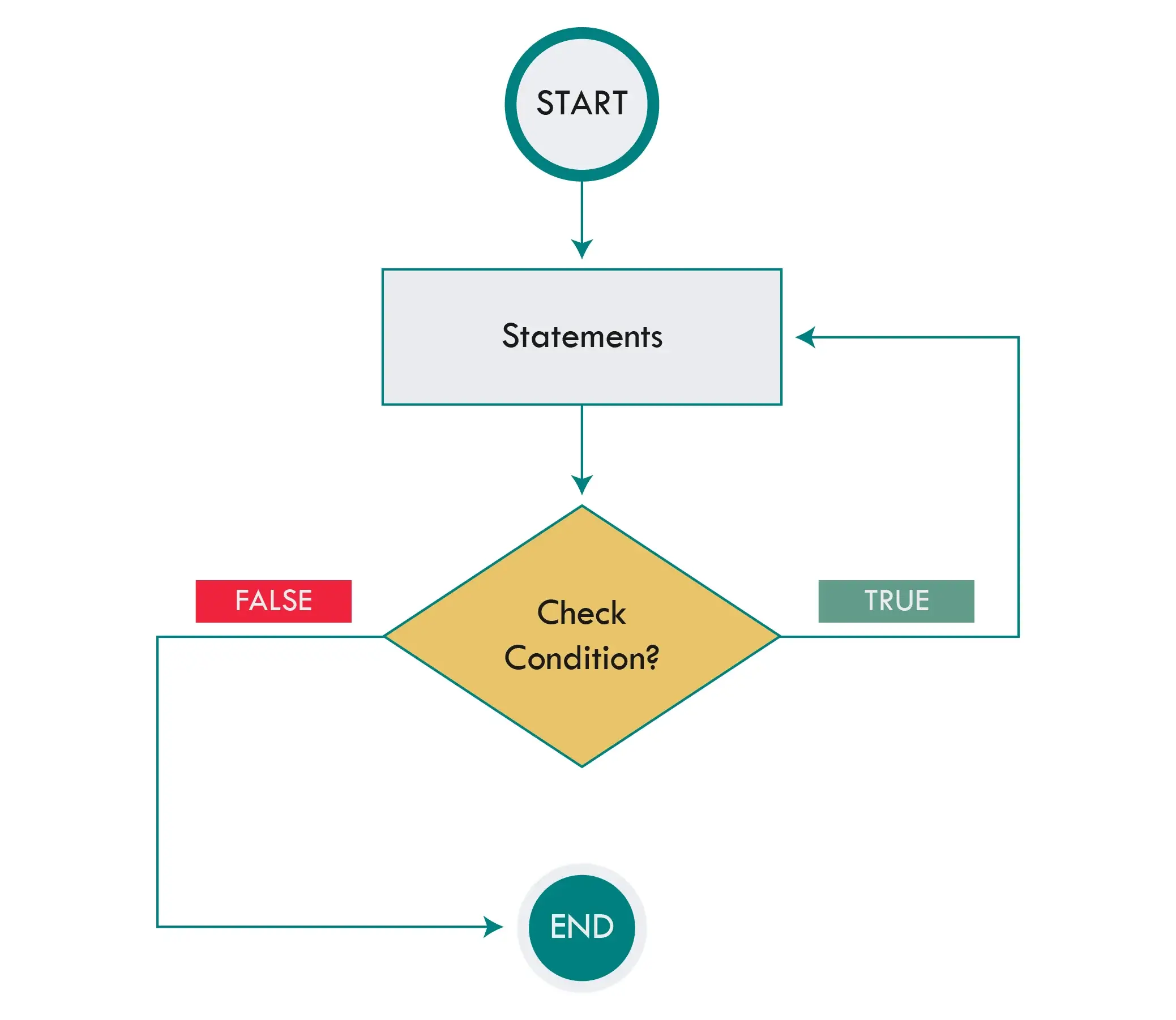PDFVersion
No ads? No problem! Download the PDF book of this tutorial for just $24.99. Your support will help us reach more readers.
Thank You!
Loops in C++ Programming Language:
Loops are fundamental structures in programming used to execute a set of instructions repeatedly. They empower programs to perform tasks iteratively and efficiently. By leveraging loops, we can execute instructions thousands or even millions of times, enhancing the power and flexibility of our programs.

The repetitive nature of computers makes them adept at processing large volumes of data. In numerous scenarios, there arises a need to execute a block of code multiple times, mirroring the repetitive occurrences in daily life such as days and nights, or the changing seasons. This repetition is a cornerstone in programming, enabling the automation of tasks and streamlining processes.
Example:In a payroll system, certain procedures are common for all employees. These procedures are iteratively applied when managing employee data. Therefore, the ability to repeat actions is invaluable in programming.
Suppose we want to calculate the sum of the first 10 whole numbers (1 to 10). While a straightforward approach is to manually add these numbers, it becomes impractical for larger sets, such as the sum of the first 1000 integers.
int sum = 1 + 2 + 3 + 4 + 5 + 6 + 7 + 8 + 9 + 10;
cout << "The sum of the first 10 digits is: " << sum; Although functional, this method becomes unwieldy for larger computations. Herein lies the significance of loops in programming.
Loops automate repetitive tasks by iterating over a set of instructions. They enable us to streamline processes and handle large datasets efficiently.
The forloop executes a sequence of statements multiple times, simplifying the management of loop variables. Read More...
The whileloop repeats a statement or group of statements while a given condition is true. It evaluates the condition before executing the loop body.Read More...
Similar to the whileloop, the do-whileloop checks the condition at the bottom of the loop. It is guaranteed to execute at least once.Read More...
Nested loops involve using one or more loops inside another loop while, for, or do-while. This technique is valuable for handling complex iterative tasks.
By mastering these loop constructs, programmers can efficiently manage repetitive tasks and enhance the functionality and efficiency of their programs.

Sardar Omar
I did my hardest to present you with all of the information you need on this subject in a simple and understandable manner. However, if you have any difficulties understanding this concept or have any questions, please do not hesitate to ask. I'll try my best to meet your requirements.
